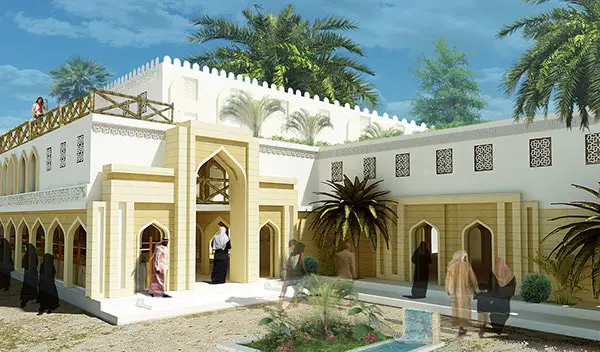Table of Contents
READ ALSO: 5 Interesting Hair Style Quotation

Swahili Style Architecture
Swahili architecture is a term used to designate a whole range of diverse building traditions practiced or once practiced along the eastern and southeastern coasts of Africa.
Rather than simple derivatives of Islamic architecture from the Arabic world, Swahili stone architecture is a distinct local product as a result of evolving social and religious traditions, environmental changes, and urban development.
What is today seen as typically Swahili architecture is still very visible in the thriving urban centers of Mombasa, Lamu and Malindi in Kenya and Songo Mnara, Kilwa Kisiwani, and Zanzibar in Tanzania.
The distribution of Swahili architecture and towns provides important clues about trade relationships among different regions and societal systems.
Exotic ornament and design elements also connect the architecture of the Swahili coast to other Islamic port cities.
Many of the classic mansions and palaces of the Swahili coast belonged to wealthy merchants and landowners, who played a key role in the mercantile economy of the Swahili coast.
Swahili architecture exhibits a range of innovations, influences, and diverse forms.
History interlocks and overlaps, resulting in densely layered structures that cannot be broken down into distinct stylistic parts.
Many spectacular ruins of the so-called golden age of Swahili architecture may still be observed near the southern Kenyan port of Malindi in the ruins of Gedi (the lost city of Gede/Gedi).
Key Elements of Swahili Architectural Style
Along the coast of East Africa, one can find many stone monuments built by the Swahili, including houses, tombs, and mosques.
The materiality of local coral limestone marks the signature building language of Swahili architecture and provides a functional response towards both human needs and the physical environment.
Other raw materials, including coral rag and mangrove poles are commonly used to elaborate stone buildings.
The decorative designs on the building façade are influenced from a mix of cultures from mainland Africa and inspiration from Arabia and Indian immigrants.
Various designs on roofs and windows serve to protect buildings from dramatic monsoon seasons.
The most distinguished local feature of Swahili architecture are Swahili doors.
The designs and motifs of doorframes can be categorized into two types: Rectangular frames represent an older Swahili style with straight lintels, while arched lintels were more prevalent in the later nineteenth century.
The center of the lintel often carries a carved Arabic inscription, such as a quote from the Quran or information of the householder.
Therefore, doors usually serve as an important indicator to enhance and signify the social status of the householder.
On the urban level, Swahili towns are organized through sections called mitaa, divided by city walls.
In Swahili, mitaa are imaginary and symbolic districts with which local inhabitants associate their social identities.
Each mitaa is centralized around a mosque.
The social status of each mitaa can be reflected through the types of buildings and activities revealed through archeological excavations.
Swahili architecture is a distinctive and historically rich style that developed along the East African coast, particularly in regions like Kenya and Tanzania.
This architectural tradition reflects a blend of African, Arab, Persian, and Indian influences, shaped by centuries of trade, cultural exchange, and Islamic practices.
Key Features of Swahili Architecture
- Materials: Structures are primarily built using coral stone and lime plaster, materials well-suited to the coastal environment. Mangrove poles are commonly used for roofing and structural support.
- Design Elements: Swahili buildings often feature intricately carved wooden doors, known as Swahili doors, which are significant both artistically and symbolically. These doors typically display geometric patterns and may include Arabic inscriptions. Homes are designed around central courtyards, providing privacy and aiding in ventilation. Barazas, or low stone benches, are integrated into the façades, serving as communal seating areas.
Architecture in Swahili
In Swahili, architecture is generally referred to as “usanifu majengo” or simply “usanifu”, which means “design” or “planning” (in the context of buildings).
Here’s a brief overview of how architecture is discussed in Swahili, including some useful vocabulary and cultural context:
Basic Terms in Swahili
| English | Swahili |
|---|---|
| Architecture | Usanifu majengo |
| Architect | Msanifu majengo |
| Building | Jengo (plural: Majengo) |
| House | Nyumba |
| Structure | Muundo |
| Construction | Ujenzi |
| Design (verb/noun) | Sanifu / Usanifu |
| Plan (blueprint) | Mpango wa ujenzi |
| Engineer | Mhandisi |
| Contractor | Mkandarasi |
Sample Sentence in Swahili
- “Usanifu majengo ya Kiswahili unaonyesha mchanganyiko wa tamaduni mbalimbali za kiasili na za kigeni.”
“Swahili architecture shows a blend of indigenous and foreign cultures.”
Photo credits: 11